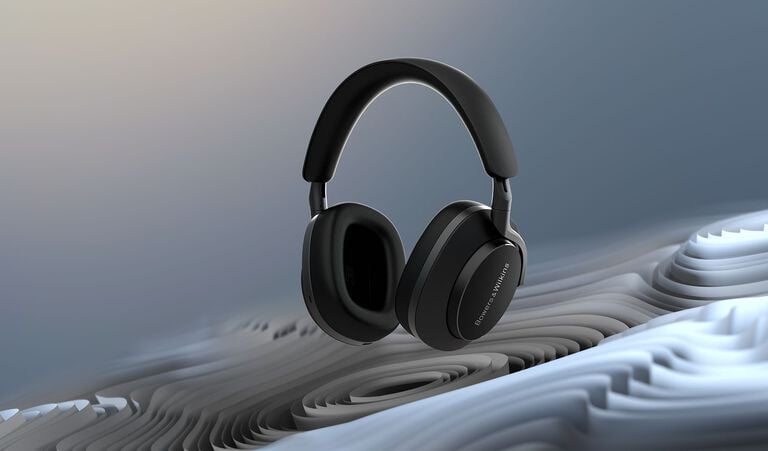Designed to fit: engineering the award-winning Pi8 and Pi6 earbuds
Our latest in-ear headphones are the perfect example of a fit and comfort success story.
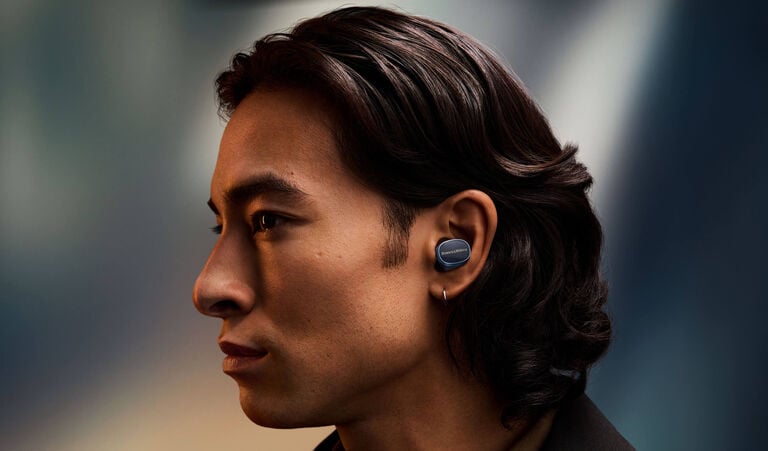
When it comes to selecting a new pair of earbuds, the first thing music lovers usually think about is the sound quality. And while this is an essential feature to consider for the ultimate personal listening experience, there’s something else that can make or break your auditory journey.
Fit and comfort – that’s it. You need a pair of earbuds that fit snugly in your ears and are comfortable enough to wear for extended periods of time.
With a perfect fit, your favourite music sounds more precise. Your noise-cancelling performs better, easily shutting out every distraction. Your calls sound clearer than ever due to no microphone obstruction, and thanks to their comfy fit, you’re guaranteed to want to wear your earbuds for even longer.
Our latest earbuds are the perfect example of a fit and comfort success story. While we are experts in engineering excellence, we’re always learning, evolving – and in pursuit of audio perfection. This helps us to deliver the best listening experiences we possibly can and ensure you can enjoy marvellous True Sound anywhere and everywhere.
Before we discuss how we designed our most comfortable in-ear headphones ever, we’d first like to introduce you to them: the award-winning Pi8 and Pi6 – our latest True Wireless earbuds.
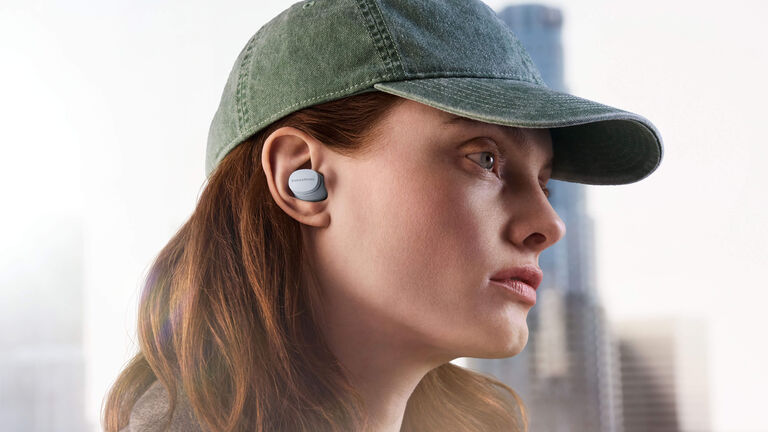
How the 801 changed music recording
Three years later in 1980, John Bowers brought the first 801 to Abbey Road to demonstrate its potential. On its arrival, the studio’s engineering team immediately understood its value and soon adopted it as their monitor of choice. This led to Abbey Road becoming the first recording studio in the world to use the 801 full-time, and marked the start of an enduring 45-year relationship. Since that day, successive generations of 800 Series loudspeakers have continually graced Abbey Road’s control rooms, mastering rooms and transfer rooms.


Earbud evolution
The development process for Pi8 and Pi6 began as many successful engineering projects do: by examining what could be improved from a previous design.
We knew that with Pi7 S2 and Pi5 S2, we’d made significant advancements in earbud design. Still, our continued experience in crafting headphones suggested new ways for us to approach design and elevate the usability and performance further.
The Pi7 S2 and Pi5 S2 both featured relatively large designs that required the earbuds to be rotated to lock into the user's ear. While this is common among earbuds, we found that a small number of users could not position them in their ears in a way that allowed them to experience the earbuds’ total performance level.
Additionally, the microphones used for noise cancellation and call quality were located on the side of the earbud and designed to be positioned at the intertragic notch. For all the non-ear-experts out there, that’s the part of the ear at the very bottom, roughly underneath the tragus and above the earlobe. If the listener could not fit the earbud into their ear properly, it could result in the mic being obscured, reducing the effectiveness of noise cancelling and call quality.
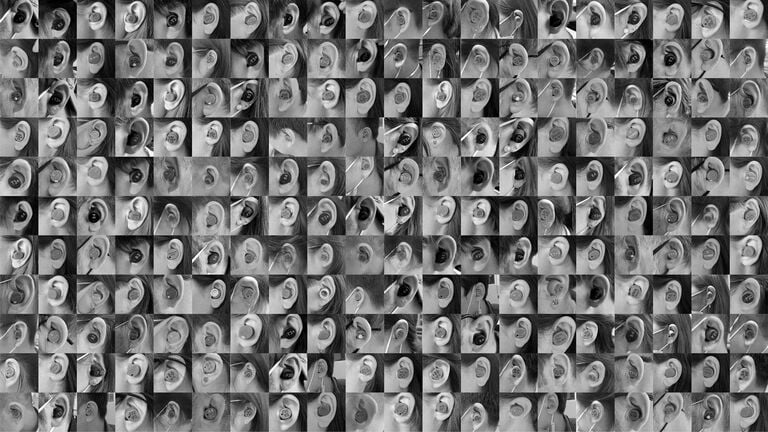
© Goodwin Hartshorn
The science behind the fit
Once we’d identified the areas we wanted to improve for the new generation of earbuds, we embarked on the next, crucial step in our design process: the research.
So, how do you design in-ear headphones that successfully fit a variety of users with different-shaped and sized ears? Well, you need to study a lot of ears.
To ensure our new earbuds would deliver universal comfort, we collaborated once again with Goodwin Hartshorn – the industrial designer behind our award-winning Px7 S2 , Px8 – and now Px7 S3 headphones. Over a three-year period, we conducted a large review of academic papers on ear size and shape. Additionally, we gathered our own detailed anthropometric data across a broad demographic spectrum and tested numerous prototypes on ears of different sizes, shapes, ethnicities and genders. This meticulous approach helped us define a new ergonomic benchmark for in-ear fit.
Over a hundred prototypes and countless hours later, we had refined our model and, in the process, learned some new and fascinating insights into earbud design.
The testing taught us that there is very little correlation between gender, ethnicity and ear size and that the diameter of the design’s sound tube was also very important for comfort. Additionally, we learned that we needed to create a layered design to optimise the positioning of the microphone and antenna. This would help them work in harmony with the architecture of the ear as well as the other tech within the earbud, such as the drive unit, battery, and other electronics.
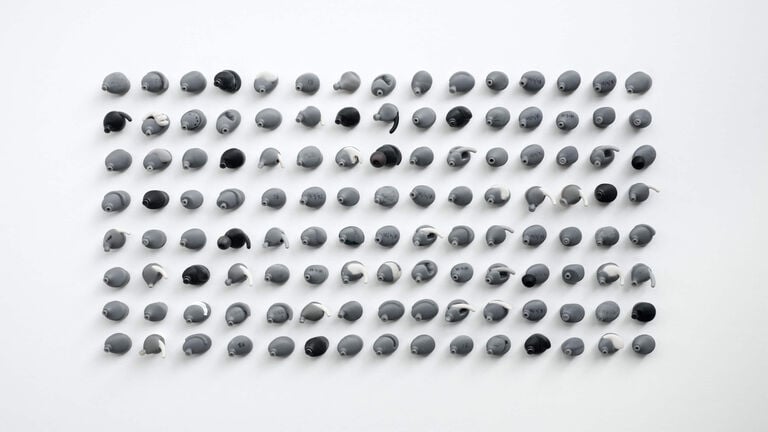
© Goodwin Hartshorn
Ergonomic excellence
The shape of our earbuds’ new industrial design was finalised, and not only did it guarantee a snug and comfortable fit for every user, but it also featured a recalibrated centre of gravity, improved mass distribution and weight. This was key to making sure the earbuds remained balanced and would stay secure within the ear when in use.
In a first for Bowers & Wilkins, we included in the box four pairs of different-sized ear tips that connect to the earbuds and can be interchanged depending on the user’s preference. From large to medium and small to even smaller, these rubber ear tips allow users to customise their earbuds further, tailoring the fit to match their needs. The result is a tighter fit that ensures sound is directed perfectly into the ear canal.
These fine details contribute to the natural in-ear feel of Pi8 and Pi6 and dramatically reduce fatigue for longer listening sessions.
Built to last longer
While the upgraded architecture of Pi8 and Pi6’s design is the main story here, the materials used to craft and finish these earbuds are also very important.
We chose every material with purpose: soft-touch polymers for all-day comfort, durable acoustic meshes to protect internal components and luxurious finishes that reflect the premium look and feel Bowers & Wilkins is revered for. These choices weren’t just about feel and function; they also help the earbuds maintain a sleek, understated elegance, even after hours of use.
What’s more, both models feature IP54-rated resistance to dust and water, meaning they’re built to go wherever your day takes you – from the morning commute to a long-haul flight and beyond.
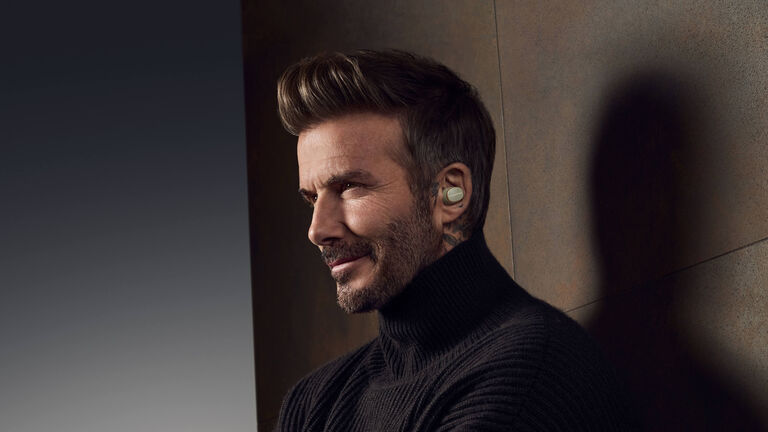
A fit that elevates performance
Great design doesn’t just look and feel good – it works harder, too.
The snug, secure fit of the Pi8 and Pi6 doesn’t just improve comfort; it actively enhances your listening experience. With a tighter seal in the ear, sound leakage is minimised, bass response is tightened and noise cancellation becomes significantly more effective. That means less outside interference and more of the music you love.
Our repositioned microphones, antennae and recalibrated wear sensors also work more efficiently thanks to this precise fit. Whether you’re on a call or enjoying your favourite playlist, your earbuds are working in perfect harmony with your ears to deliver clear, consistent, uninterrupted True Sound.

Designed for you
With Pi8 and Pi6, we didn’t just aim for great sound – we designed every detail around how people use their earbuds.
From the refined industrial design and customised ear tips to the ergonomic architecture shaped by global research, these True Wireless earbuds represent a new benchmark in comfort and performance.
Because when your earbuds feel this good, sound this rich and stay perfectly in place all day long, you don’t just hear the difference. You feel it.
